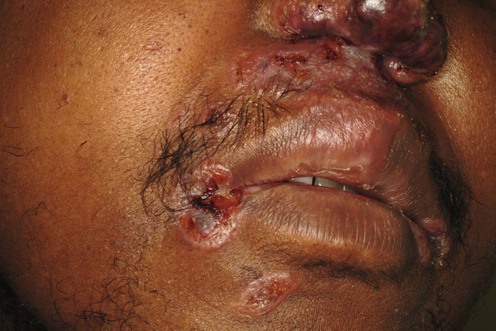Jones EJ, Callen JP. J Am Acad Dermatol 1990; 23: 487–9.
Sarcoidosis

First-line therapies
Hydroxychloroquine is effective therapy for control of cutaneous sarcoidal granulomas.
![]()
Stay updated, free articles. Join our Telegram channel

Full access? Get Clinical Tree











 Topical corticosteroids
Topical corticosteroids Intralesional corticosteroids
Intralesional corticosteroids Oral corticosteroids
Oral corticosteroids Chloroquine
Chloroquine Hydroxychloroquine
Hydroxychloroquine Methotrexate
Methotrexate